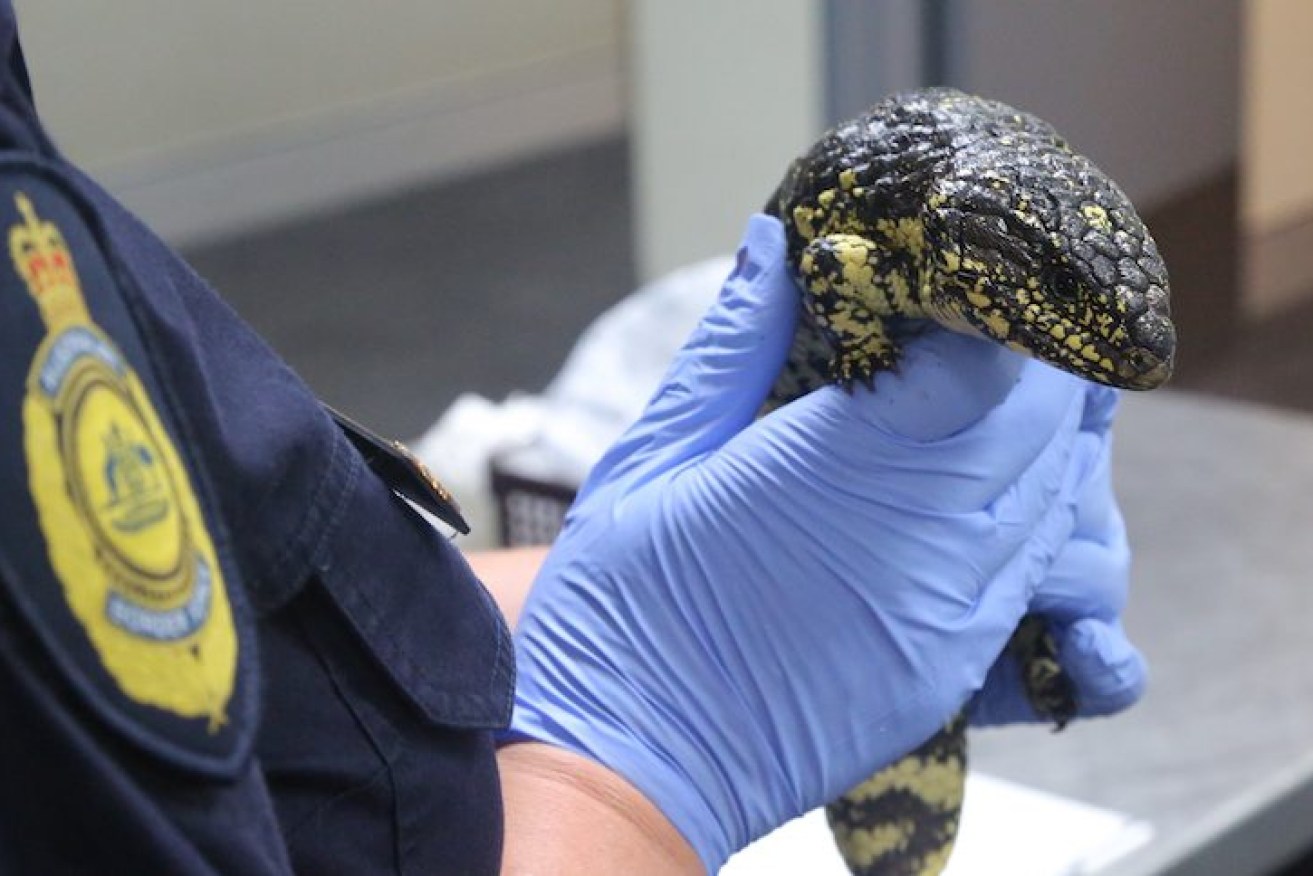SA lizards, wildlife targeted by traffickers
Criminals trading South Australian reptiles and mammals worth “many thousands of dollars” overseas must face far greater penalties, according to the biologist establishing a new $7 million national wildlife protection team in Adelaide.


Native shingleback lizards found in a passenger's luggage in 2019. A foreign traveller was charged. Photo: AAP/Australian Border Force
Associate professor Phillip Cassey currently oversees a dedicated University of Adelaide unit tracking the illegal multi-billion-dollar global wildlife trade business, and its research reveals widespread demand for South Australian reptiles.
“One of the groups (of animals) we’ve worked on is the shingleback lizard: they are highly sought after in European markets,” Cassey said.
Evidence also has emerged that the rare Pygmy Blue-tongue Lizard rediscovered near Burra in South Australia during 1992 is also being traded.
“There was a group of kangaroos found on the street in India,” Cassey said, adding that there is also evidence of numerous South Australian species being traded including smaller gliders and monitor lizards.
He said the illegal trade threatened biodiversity and penalties relating to the crime must be substantially increased, saying currently “these are not crimes against people they are crimes against the environment and nature and they often get downplayed by the court system”.
He cited reports of a Western Australian man found with a black-headed python, pygmy spiny-tailed skinks, a dinner plate turtle and a venomous Pilbara death adder where an original fine was reduced due to a judgement over the “seriousness” of the offending.
Cassey’s comments come as government surveillance agencies are increasingly concerned nationally about trafficking affecting biodiversity by wildlife loss, but also about alien species entering the country, such as fish varieties that are smuggled in and can threaten the environment if released into waterways.
Cassey recently won a $3.7 million Australian Research Council Industry Laureate Fellowship that has received a further about $3 million stakeholder funding to run a five-year national program to fight wildlife crime and prevent environmental harm.
The program will be established next year at the University of Adelaide where Cassey already leads the Invasion Science and Wildlife Ecology Group, and recruiting is underway.
It will tackle escalating wildlife crimes where the “harvest, killing, and trade of plants and animals seriously threatens Australia’s $100 billion agricultural, forestry and fisheries exports, and tourism industry”.
Cassey said the aim was to develop new digital and wildlife forensic tools to improve the surveillance and detection of illegal activities: these in turn would support enforcement agencies in both identifying and stopping the illegal harvest and trade of plants and animals.
The program is also planning to work on raising public awareness about wildlife crimes and helping “change social attitudes towards these crimes”.
Cassey also intends to continue advocating for tougher rules to fight illegal trafficking.
The SA Government is currently working to develop a new Biodiversity Act to boost biodiversity conservation and integrate the goals of the Native Vegetation Act 1991, the National Parks and Wildlife Act 1972 and the Landscape South Australia Act 2019.
It will also incorporate the knowledge of Aboriginal South Australians in the management of land and respect for its ecosystems with community feedback expected to be sought “in the second half of 2023”.
Cassey believed there were gaps in current legislation saying there was scant protection for terrestrial invertebrates (creatures without a backbone living on land) despite increasing trade in leaf insects, scorpions and tarantula spiders.
He said there was demand for a wide gamut of wildlife with evidence of people collecting invertebrates from centipedes to cockroaches.
In September, Cassey co-authored an international report that found alien species are also increasing in numbers around the world at unprecedented rates.
“Australia has approximately 3000 invasive alien species, which are estimated to cost the country over $20 billion every year in damages to primary industry and costs of management and control,” he said.
The global economic cost of invasive alien species exceeded $423 billion annually in 2019, with costs having at least quadrupled every decade since 1970. Asia and the Pacific accounted for 25 per cent of reports of biological invasions.
“Invasive alien species are impacting all countries and regions of the world, and these impacts are continuing to increase,”said Cassey, who co-authored chapter four of the report, titled ‘Impacts of biological invasions on nature, nature’s contributions to people, and good quality of life’.
“Globally, they are in the top five drivers of biodiversity loss, and in Australia they are the leading cause of biodiversity loss and species extinction.”




